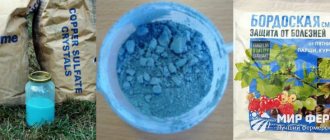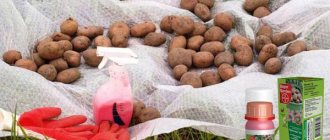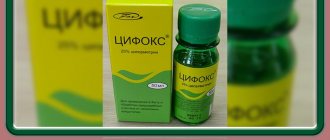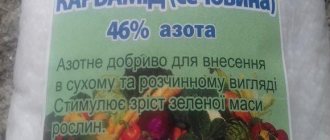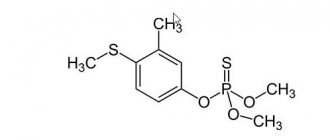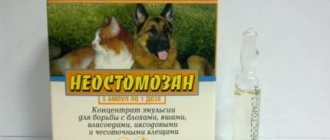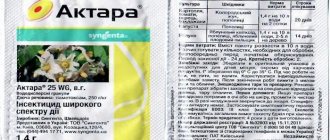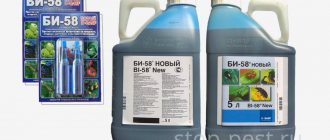Bordeaux mixture: instructions for use in gardening , which are proposed in this article, is an effective fungicide that protects vegetable crops, fruit trees and berry bushes from all fungal diseases.
Bordeaux mixture , which consists of water, copper sulfate and slaked lime, was developed at the beginning of the 19th century in the city of Bordeaux, after which it was named.
Even a novice gardener can prepare Bordeaux mixture purchased at any gardening store. But in practice, it is more difficult to use such a liquid, since each garden crop has its own dosage. Next, we will tell you how to prepare Bordeaux mixture and what dosage to choose for different vegetable and garden crops in order to protect them from fungal diseases and not cause harm.
History of creation
Even in ancient times, people noticed that copper sulfate kills fungi of all types. It is not for nothing that copper sulfate is sold as a separate product in our time. It is used by builders and carpenters to treat wood against rotting. Wood impregnated with this substance is practically not subject to rotting and mold in damp places: basements, cellars, attics, bathhouses.
Treating logs and boards with Bordeaux mixture is not difficult, since the wood absorbs the copper compound well. The situation is more complicated with living plants that cannot retain copper sulfate on their leaves. For this, lime was added, that is, milk of lime. Slaked lime, together with copper sulfate, forms a new compound called Bordeaux mixture.
The developer of this mixture was the French botanist Pierre Marie Millardet. Initially, the find was used to protect and treat vineyards from the mold fungus Plasmopara viticola, which provokes the development of a disease such as downy mildew.
Nowadays, Bordeaux mixture is used in a wide range. In addition to vineyards, other plants are also treated with it against fungal diseases:
- Tomato and potato bushes from macrosporiosis, late blight;
- Vegetables such as cucumbers, onions, garlic, carrots from septoria, downy mildew, anthracnose;
- Berry crops such as raspberries, strawberries, strawberries from spotting;
- Fruit bushes and trees from rust, scab, fruit rot, powdery mildew;
- mildew (grape).
Composition of Bordeaux mixture
Today, it is almost impossible to do without this liquid while growing vegetables, fruits and garden crops. Bordeaux mixture is one of the most effective and affordable ways to control pests and diseases in the garden.
Copper, which is part of this solution, is an excellent preventive agent for plants against infection with various diseases. And for damaged crops it will be an excellent medicine. There is a lot of information on how to prepare Bordeaux mixture yourself.
Compound
Bordeaux mixture is an aqueous solution of copper sulfate and slaked lime (a solution of copper sulfate CuSO4 5H2O and calcium hydroxide Ca(OH)2).
When mixing lime milk and copper sulfate, a reaction occurs, during which copper sulfate is formed, which destroys fungi and suppresses the activity of pathogenic organisms.
Often a 1% Bordeaux mixture is used, which consists of:
- copper sulfate - 100 g;
- slaked lime 100 g, if quicklime - 150 g;
- water - 10 liters.
Dosage
Next, let's talk about how to dilute Bordeaux mixture . This process must be approached very responsibly, since each plant requires its own dosage of the product. In this case, it is important to observe the dosage of the product. If the wrong dosage is selected, irreparable damage to the plant can be caused.
The CORRECT dosage per 10 liters of water should be taken of slaked/quicklime and copper sulfate in the following proportions:
Flow calculation
Treating various plants and trees with Bordeaux mixture involves using a certain amount of solution. It is different for each culture:
- For 1 young tree up to 6 years old, use 2 liters of the mixture.
- For fruit-bearing plants, take 10 liters of the mixture.
- For 1 bush use 1.5 liters.
- To prevent diseases in grapes, raspberries and strawberries, use 1.5 liters per 10 square meters. meters.
- For tomatoes and cucumbers, use 2 liters. for 10 sq. meters of landings.
- For 10 sq. m. planting melons, watermelons, onions or beets use 1 liter of solution.
Preparation of working solution: how to dilute correctly
Basic composition of Bordeaux mixture:
- water 10-10.2 l;
- quicklime 100-110 g;
- copper sulfate 100-110 g.
The optimal ratio of components will be 1:3.5.
Attention! You cannot change the order of introduction of reagents, the concentration of components, the percentage, or dilute the mixture with water.
The procedure is as follows:
- Copper sulfate powder in the specified amount is dissolved in a small volume of warm water (t up to 50 C).
- Bring the volume to a full 9 liters and cool.
- An excess lime solution is obtained: calcium hydroxide is diluted in a small volume of cooled soft water.
- They are preparing the so-called lime milk: the total volume of the creamy mass is brought to 1 liter, filtered.
- The copper solution is added to lime water (i.e. filtered milk of lime) and mixed.
- Check pH.
Advice!
When working with the mixture and reagents, metal utensils are not used to avoid oxidative processes. A properly prepared preparation is a suspension of colloidal particles, absolutely stable, without sediment, light blue in color. The pH reaction is neutral or slightly alkaline. A solution with an acidic reaction leads to burns, while a solution with a strong alkaline reaction almost does not linger on the leaves. Lime water is added to neutralize the mixture.
Bordeaux mixture is diluted before use. The mixture is stable for about 6 hours, after which a precipitate forms.
How to dilute Bordeaux mixture
The preparation of Bordeaux mixture is carried out according to certain rules that must not be violated so as not to harm the plants.
The correct dosage is important. A solution that is too concentrated will damage the plants, and a solution that is too weak will not give the expected result.
The following is the technology for preparing 1% Bordeaux mixture per 10 liters of water:
- To dilute the solution, prepare a non-metallic container with a volume of more than 10 liters.
- Pour some warm water.
- Carefully pour in 100 g of copper sulfate and stir thoroughly.
- Next, add cold water so that the total volume is 5 liters.
- Pour 1 liter of water into a separate container and add 100 g of slaked lime (if the lime is quicklime, then 150 g). The consistency should be like sour cream.
- Add water to the lime mortar so that the total volume is 5 liters and mix thoroughly.
- Strain the solution through cheesecloth to remove lime particles.
Important! Don’t get confused about what to pour into where! Carefully pour the copper sulfate solution into the milk of lime, stirring constantly with a wooden spatula.
- Everything mixes well. It is advisable to do everything at the same time: pour in copper sulfate and mix the lime.
You can prepare a 3% solution according to the scheme described above. Only for this, more components must be taken per 10 liters of water: 300 g of copper sulfate and 400 g of slaked lime / 450 g of quicklime.
After preparing the solution, it is necessary to check the acid reaction. To do this, a metal wire or nail is dipped into the mixture. If the metal turns red, then more lime needs to be added to the solution to reduce the acidity.
Remember that you need to prepare Bordeaux mixture according to the scheme described above. The main thing is to do everything consistently and not change the cooking stages
What not to do
It is forbidden:
- Pour milk of lime into the copper sulfate solution. This will significantly degrade the quality of the solution.
- Mix warm ingredients with cold ones.
- Combine dry ingredients.
- Add water to the prepared solution.
- Add dry copper sulfate to lime milk.
Using Bordeaux mixture in the garden: against which plant diseases is it most effective?
In gardening, Bordeaux mixture is used against the following, usually fungal diseases of various crops:
- on pomaceous plants (apple, pear, quince) against moniliosis (fruit rot), scab, and other spots;
- on stone fruits (apricot, plum, peach, cherry and sweet cherry) from clasterosporiasis, curl, coccomycosis, moniliosis;
- on berry bushes (currants, gooseberries, raspberries, strawberries and blackberries) from anthracnose, septoria, rust and other leaf spots;
- on ornamental shrubs and flower crops (for example, roses and hydrangeas) against rust and spotting.
- on vegetables (potatoes, tomatoes, cucumbers, watermelons, melons, beets, onions) against late blight, anthracnose, rust, downy mildew, cercospora, macrosporiosis, alternaria and similar diseases.
By the way! The main advantage of treatment with Bordeaux mixture compared to copper sulfate is that it has a neutral reaction, which means it does not burn the leaves. Although it is worth saying that you can prepare a fairly gentle solution of copper sulfate.
Precautionary measures
When using a solution of copper sulfate and lime, you must follow the safety rules:
- Prepare the mixture for spraying and process plants wearing gloves, a respirator, a hat and special protective clothing.
- Do not drink, smoke or eat anything while working with the mixture.
- Do not spray the mixture near fruits that are planned to be harvested within 2-3 weeks.
- Wash all fruits, vegetables, and berries before use.
- Do not treat plants with Bordeaux mixture during flowering, during strong winds, rain and heavy dew.
- Do not mix the solution with other fungicides and preparations.
- Do not add soap solution to the mixture to improve adhesion.
- The last spraying is carried out in the fall 2 weeks before harvest.
How to replace Bordeaux mixture
Copper and iron sulfate are analogues of Bordeaux mixture. Copper sulfate has stronger properties and is offered on the market in the form of turquoise-colored granules. This drug is slightly soluble in water.
As for the properties, we can identify some of them:
- in terms of toxicity, copper sulfate is worse than Bordeaux mixture;
- in terms of fixation on foliage, it is again inferior to the mixture;
- during rains it can be washed off from the foliage;
- application is permissible in a short time.
The liquid should penetrate into all the hidden corners where pathogenic microorganisms usually accumulate.
As you can see, Bordeaux mixture is more advanced than its analogues. At the same time, it remains a budget option, easy to use and with a wide spectrum of action.
Instructions for use
In spring, Bordeaux mixture is used for preventive spraying. This is done during swelling or after bud break, using a 3% solution. During the active growing season, use 1% Bordeaux mixture to avoid damaging the leaves.
Important! Antifungal liquid must not be mixed or used simultaneously with other drugs or fungicides.
In autumn, a concentrated 3% solution is used, since the plants no longer have foliage. Autumn treatment is carried out to protect stone fruit (cherry, apricot, plum) and pome (pear, quince, apple) trees from fungal diseases.
cucumbers
Tomatoes and cucumbers are sprayed with 1% Bordeaux mixture at the rate of 1.5-2 liters per 10 sq.m.
- Primary treatment is carried out when 2-3 true leaves appear on the plant.
- Then the procedure is repeated 2-3 times every 10-12 days.
- The final treatment with the solution is carried out 20-25 days before harvest.
Potato
- Primary processing of potatoes is carried out 1-1.5 hours before planting: the tubers are sprayed with 1% Bordeaux mixture.
- The next spraying is carried out after the bushes grow to 15-20 cm in height. Use 0.5-1 liter of mixture per 10 sq.m.
- Then the procedure is repeated every 12-15 days.
Watch the video! How to prepare Bordeaux mixture
Grape
Grape bushes are sprayed with 3% Bordeaux mixture when the green tip has just appeared from the bud, but it has not yet blossomed.
Important! During the growing season, only a 1% solution is used for spraying.
Grape leaves are sprayed both from the outside and from the inside.
Currant
Currant, gooseberry and raspberry bushes are sprayed with Bordeaux mixture to reduce the risk of spotting.
- Primary treatment is carried out in early spring with a 3% solution.
- The next 2-3 sprayings are carried out using a 1% solution.
Tomatoes
- Tomato seedlings are treated with a 1% solution of Bordeaux mixture from a spray bottle if gray, brown or black spots appear on the leaves.
- To prevent late blight and other diseases, tomatoes are sprayed with this product 2 weeks after planting the seedlings in a permanent place. Use 1.5-2 liters of solution per 10 sq.m.
- During the season, bushes are treated with the drug 3-4 times with an interval of 10-14 days.
Strawberry
The first treatment of strawberry bushes or garden strawberries is carried out after the snow melts. To do this, for 10 sq. meters use 0.5-1 l of 3% mixture.
The second spraying is carried out when leaves appear on the plant. At the same time, the concentration of the solution is reduced to 1%.
Next, the bushes are treated with a 1% solution at the beginning of the appearance of buds and after harvesting.
Trees
Trees are treated with a 3% mixture until buds open in early spring at the rate of:
- 10-15 l per 1 adult plant;
- 2-3 l – per young tree.
The second treatment is carried out with a 1% solution when the green tip of the leaf begins to appear from the bud (in the “green cone” phase).
The next spraying is carried out after the trees bloom. During the season, you can spray trees with Bordeaux mixture no more than 6 times, maintaining an interval between procedures of 10-15 days.
Watch the video! Bordeaux mixture - application for tomatoes, strawberries, grapes and other plants
How to properly prepare Borodos mixture
The preparation sequence looks like this: dilute a solution of lime and vitriol in separate buckets, and then mix both solutions together, stirring continuously. You should get a blue opaque liquid.
To dissolve in water you need to take quicklime. You cannot use plastic containers to slak lime, and metal containers to mix the general solution, since metal reacts with the preparation.
To make a 1% solution, dilute 100 g of vitriol in 5 liters of water, and dissolve 100 g of lime in the same volume of water. To get a 3% liquid, you need to take 300 g of vitriol and 300-350 g of lime. After dissolution, mix both solutions in one container.
Expert opinion
Zarechny Maxim Valerievich
Agronomist with 12 years of experience. Our best country expert.
Ask a Question
After preparation, you need to check the acidity level of the solution: dip litmus paper into the Bordeaux mixture. If it does not turn red, change color or turn bluish, the solution can be used. If the paper indicates an acidic reaction, you need to add a little lime.
You need to use the Bordeaux mixture immediately; you will have to stir the liquid as you work to maintain its homogeneity. During long-term storage, particles settle and stick together; when sprayed, they can clog the sprayer nozzle.
See also
Instructions for use of the herbicide Axial, application rates and analoguesRead
Bordeaux mixture. Composition, preparation and use of Bordeaux mixture
The most popular fungicide appeared in the city of Bordeaux. Here, a plant-safe cure for powdery mildew was studied and identified. A local botanical farmer was trying to get rid of fungi that had infected his vineyards.
When the disease left the vineyards without damaging the fruits and foliage, local residents began to actively use the new remedy. Today the mixture is used in the fight against fungi on plants.
An insoluble copper-based preparation in the form of a suspension consists of copper sulfate and slaked lime. The substance is painted in an unnatural azure shade. During processing, the composition is fixed on the shoots.
Copper sulfate is the main active component that disinfects the surface and gets rid of fungal spores. This is an independent fungicide, but more toxic; it is more likely to cause harm than cure.
Bordeaux mixture is the best option, acid, quenched with alkali. The toxic property remains for fungi, but does not kill plants due to lime.
The mixture and liquid of the same name are different things. The mixture is a dry substance in the form of a powder of two colors. Liquid is an already prepared composition for spraying vegetation.
For gardening work, mix different percentages of the substance. Typically this is 1%, 3% or 4%. The higher the percentage, the more active the copper-containing substance affects the shoots. You can buy the components separately and mix them yourself.
It is easier to purchase a ready-made packaged substance, where the proportions have already been calculated. The package will contain 100 g of copper sulfate (blue powder) and 200 g of slaked lime (white powder).
Important! To obtain 1% of the composition, combine 1 sachet of purchased powder and 10 liters of water. Accordingly, 3% is 3 sachets for the same volume of liquid.
The finished composition cannot be diluted with water. You can mix in a little lime diluted in water to reduce the acidity level.
Step-by-step instruction
- You will need 2 plastic buckets with a volume of at least 5 liters. White and blue powder are dissolved separately from each other.
- Open the package with blue powder. Stir in 200-250 ml of warm water.
- Pour the remaining water into the bucket (5 liters in total).
- Open the bag of white powder. Grains can stick to mucous membranes and enter the respiratory tract, causing burns. You should wear a mask or work in a windless area.
- Slowly and stirring, pour 5 liters of warm water into the lime. You should get a homogeneous liquid without lumps.
- When both mixtures have already cooled and completely dissolved, you can proceed to combining them. We pour the blue solution into the white one, the other way around is not possible. Stir until smooth.
- An iron object is used to test the substance. If, when immersed in a solution, it becomes covered with red spots, this indicates an excess of copper. Plants may suffer from such treatment. The concentration can be reduced with lime diluted in water.
- The composition is additionally filtered so that the sprayer does not become clogged.
Important! The composition retains its properties in a bucket for only 12-24 hours. Then it loses its properties. After spraying, it protects vegetation for a month.
The mixture prevents the spread of infection , rotting , and protects against parasites . It not only fights fungi , but also disinfects the surface. Therefore, it is used for processing sections .
Fungi quickly “eat” flowers and fruits and destroy the entire plant. Removing fungal spores is quite difficult. Typically, multiple treatments are required, during which the plant must combat chemicals. If the reaction is untimely, trees, shrubs and flowers die. In order not to expose your own garden to such risks, it is better to take care of the health of your green friends in advance.
Interesting! When the Bordeaux mixture hits the leaves, it becomes attached to them. Then pathogenic fungi, dependent on copper ions, begin to absorb the poison. They quickly accumulate a concentration of copper and die.
Treatment begins when the trees are still bare and the buds have not swelled on them. Usually this is mid-March. Use 3-4% liquid.
A 1% mixture is used as prophylaxis during the growing season. It is also suitable for eliminating fungal spores at the initial stage of their appearance.
Important! Fruit trees may suffer from frequent treatments with a copper-containing preparation. What causes the fruit skin to crack? Plants cannot be processed more than 2 times a month, and fruit trees no more than 1 time a month.
Bordeaux mixture remains on the surface of the leaves, even after rain. The drug belongs to insoluble copper-containing products. It seems to be eating into the plate. However, pathogenic fungi will also have to make an effort to dissolve the drug and absorb it.
Important! Bordeaux mixture remains on the surface of the plant without penetrating inside. Therefore, the composition is able to fight fungi, but is not a protector against insects. The mixture can prevent the appearance of a colony; it will not kill existing insects.
Plants that lack copper begin to suffer from chlorosis. Spraying will not only get rid of diseases, but will also feed the vegetation with copper.
Copper is often used as fertilizer to:
- activate the growth of the bushy part;
- normalize root growth;
- remove any stains that appear on the leaf plate.
Calcium contained in lime saturates the soil and the plant itself. The substance activates growth, improves cell division and metabolic processes, and enhances fruiting.
However, excess is poison. Excessive use of copper-containing drugs will lead to:
- leaf curling;
- the appearance of dark spots;
- stopping growth and development.
More often than not, the concentration used for treatment is too high and causes negative effects. Poisonings have also occurred among people; protective measures should not be neglected.
Bordeaux mixture is often diluted to disinfect the substrate. A large percentage of pests and diseases hide there. To prevent larvae and spores from awakening, the tree trunks of plants are irrigated at the beginning of spring.
You can also treat cuts and wounds on trees. This will prevent spores and bacteria from reaching vulnerable areas.
The composition is practically not used for pest control, because they already appear on leaves, fresh shoots and flowers, which are very sensitive to chemicals.
A weak solution will help prevent colony formation and will kill their larvae. Treatment begins before the growing season, not forgetting about the tree trunk circle. And also in mid-autumn, during leafless times.
The drug prevents problems with fungi and insects. When the trees are in bloom, it destroys the crop. Therefore, it is administered for prevention only during leafless times.
Spring treatment gives plants the opportunity to develop healthy and prepared for the new season.
4-fold treatment kills all fungi and larvae from last season:
- 1 spraying – mid-March. The snow should melt. The buds on the trees have not yet woken up. The air temperature is above +5°C. Use a 3-4% mixture.
- Stage 2 - during the period of appearance of green buds from which foliage will hatch. Liquid concentration is no more than 1%.
- 3 spraying is carried out as soon as flower buds appear. But on such plants they no longer use liquid from copper and lime. It is better to use "Chorus" or "Decis".
- Stage 4 – before flowering. Decis or Chorus are also used.
Autumn treatments do not give the same effect as spring “treatment”. You cannot skip spraying in early March. Otherwise, bacteria and spores will begin to spread, and more serious chemicals will have to be used.
It is impossible to use a fungicide more than 3-4 times a season. And why, the drug lasts about a month, 3 treatments are more than enough.
Important! It is prohibited to use a solution of copper and lime when the trees already have a lush crown. This will lead to crop loss. It is also better to always spray the vegetation with a less concentrated liquid than to burn everything with chemicals.
The treatment can be repeated in early September, when the harvest has already been harvested, using a concentration of 0.5-0.75%. The inner part of the leaf with the trunk circle is also processed. Most insects and larvae hide there.
Attention! It is better not to take risks and spray with copper-containing preparations during leafless times. That is, before the growing season begins and after the leaves fall.
Plants can only be processed in:
- respirator;
- gloves;
- robe and cap.
Rules when working with Bordeaux mixture:
- The sprayer must not splash chemicals sideways or leak.
- If fruits have already appeared on the trees, the treatment is carried out at least 21 days before harvest and weak solutions of 0.5-1% are used.
- The weather should be calm and without precipitation.
- You should not eat where chemicals are sprayed. This will lead to poisoning.
- If there is a place nearby where drinking water is stored or a pond, it is covered with a thick film. Chemicals will easily settle in water as they travel through the air.
- The harvested crop must be washed thoroughly before use.
A few rules:
- The trunk of trees and the lower part of plants must be literally washed with Bordeaux mixture. The crown is treated from a sprayer.
- The tree trunk circle is also irrigated with the composition, because most insects live the winter in the tree trunk circle.
- After treatment, the plants must literally turn blue, otherwise the composition will not work.
- You need to start irrigating the vegetation in the morning. Then the shoots will dry out by evening. This way there will be no risk of developing putrefactive processes or freezing.
- During processing there should be no frost, rain, gusts of wind, or extreme heat.
Important! All plants in the garden must be treated. If you leave certain areas untreated, insects and fungi will quickly move to healthy shoots. But it is important to note that different vegetation also wakes up in different ways. The start of the procedure should always be during leafless time.
You cannot use the same drugs every year; they need to be changed regularly. Otherwise, pests and fungi will develop immunity, and the chemicals will stop working.
It is the active substance that needs to be changed, i.e. a preparation under a different name, but with the same copper sulfate, will not be suitable for processing next year.
More delicate vegetation is sprayed less than trees, using a low concentration of the substance. Fruits, buds and foliage are never processed.
Attention! Even if the vegetation in the garden is healthy, and the neighbors have rust or powdery mildew everywhere, it is likely that fungal spores will fly to healthy shoots. Spores easily fly through the air.
Pros:
- The composition does not wash out with rain.
- The liquid lasts 20-30 days. It depends on the quality of the ingredients, weather and temperature. The next spraying begins after 2-4 weeks.
- The product kills almost all types of fungi. If spraying is carried out in accordance with the recommendations, the plant does not suffer at all.
- The composition copes especially well with black cancer and scab - one of the most difficult diseases.
- The substance is effective and is very inexpensive.
- The composition is non-toxic to bees.
Minuses:
- The composition does not work together with substances that break down in alkali.
- Copper can remain and accumulate in the substrate, which negatively affects plants, they wither and become weak. The cumulative effect appears after several years.
- Copper is essentially poison. You can get poisoned if you don't use protective measures. Processing begins in calm weather, without wind. Work only with gloves.
- Working with the drug requires serious equipment and personal time.
- Fruits and berries should be washed well with water, not forgetting that the plant was in contact with the fungicide.
- Deviations from the mixture recipe will lead to death and withering.
Regulations for the use of Bordeaux mixture
There is only one way to use Bordeaux to protect crops from diseases - spraying. Watering the soil is not provided for by official regulations.
Depending on the plant species, treatments are carried out at different intervals. It is also important to observe the waiting period between the last treatment and harvest:
| Culture | Suspension concentration | Processing time | Number of sprays | Waiting period |
| Potatoes and tomatoes | 1% | Starting from the first days of July | 4 | 15 days |
| Beet | 1% | Starting from closing the tops in the rows | 3 | 15 days |
| Onion | 1% | Starting from the 3rd true leaf phase | 3 | 15 days |
| Strawberries | 1% | Before flowering and after harvesting berries | 2 | – |
| Pomaceous fruits | 3% | Early spring, before the buds awaken | 1 | – |
| 1% | Starting from the budding phase | 4 | 10 days | |
| Stone fruits | 3% | Early spring, before the buds awaken | 1 | – |
| 1% | Starting from the budding phase | 4 | 10 days | |
| Raspberries, blackberries | 3% | Early spring, before the buds awaken | 1 | – |
| Currants, gooseberries | 1% | Starting with the leaves blooming | 3 | 10 days |
| Grape | 3% | Early spring, before the buds awaken | 1 | – |
| Coniferous crops | 1% | Starting in early spring | 6 | – |
Bordeaux mixture is suitable for protecting roses and other ornamental flowering crops. They can be treated with a 1% suspension starting in early spring.
Using Bordeaux mixture, you need to prepare for the rapid failure of the sprayer. Therefore, if you don’t have extra money, it is better to pour Bordeaux into a regular household plastic spray bottle. For large processing volumes, an ordinary broom can also help out.
